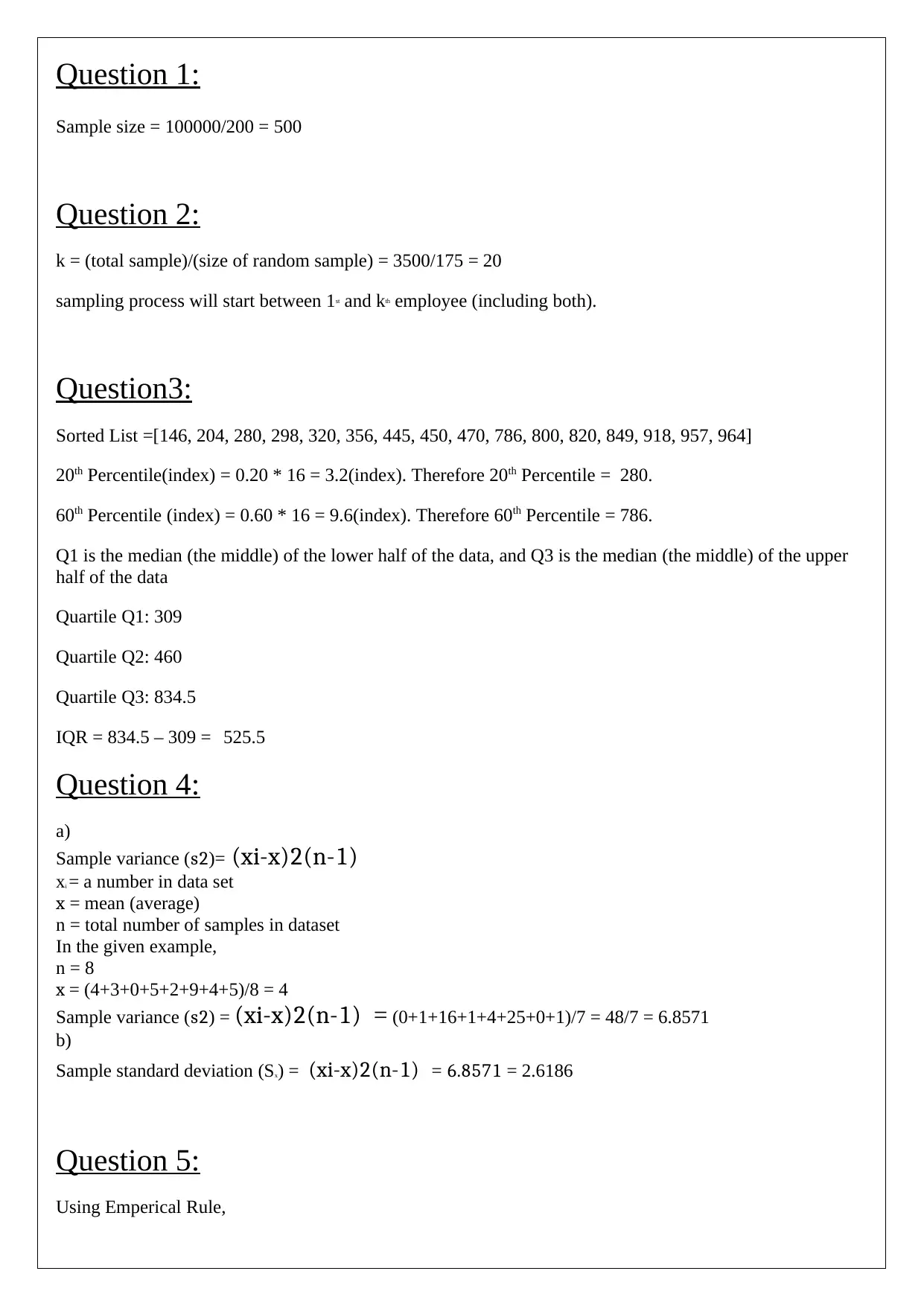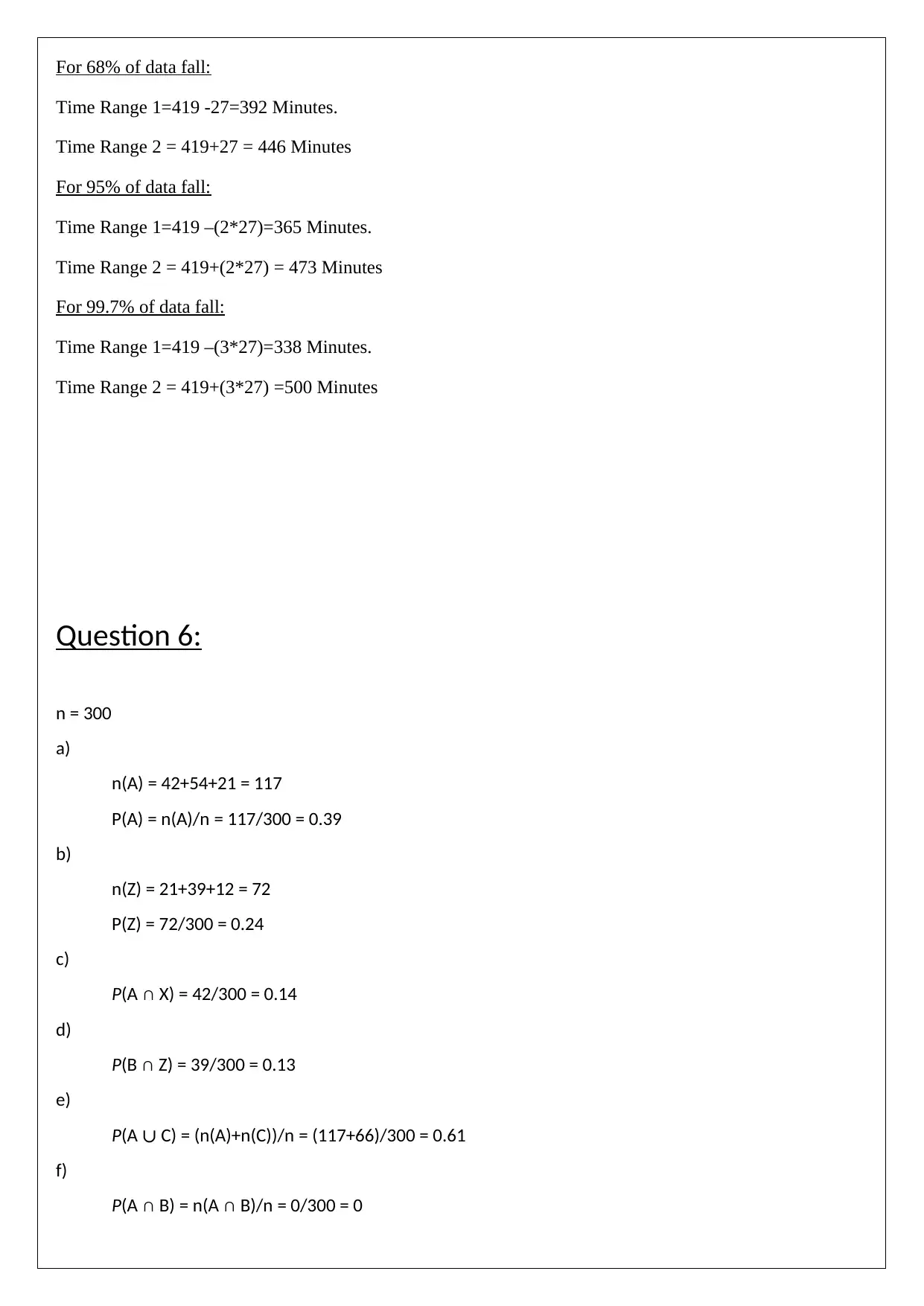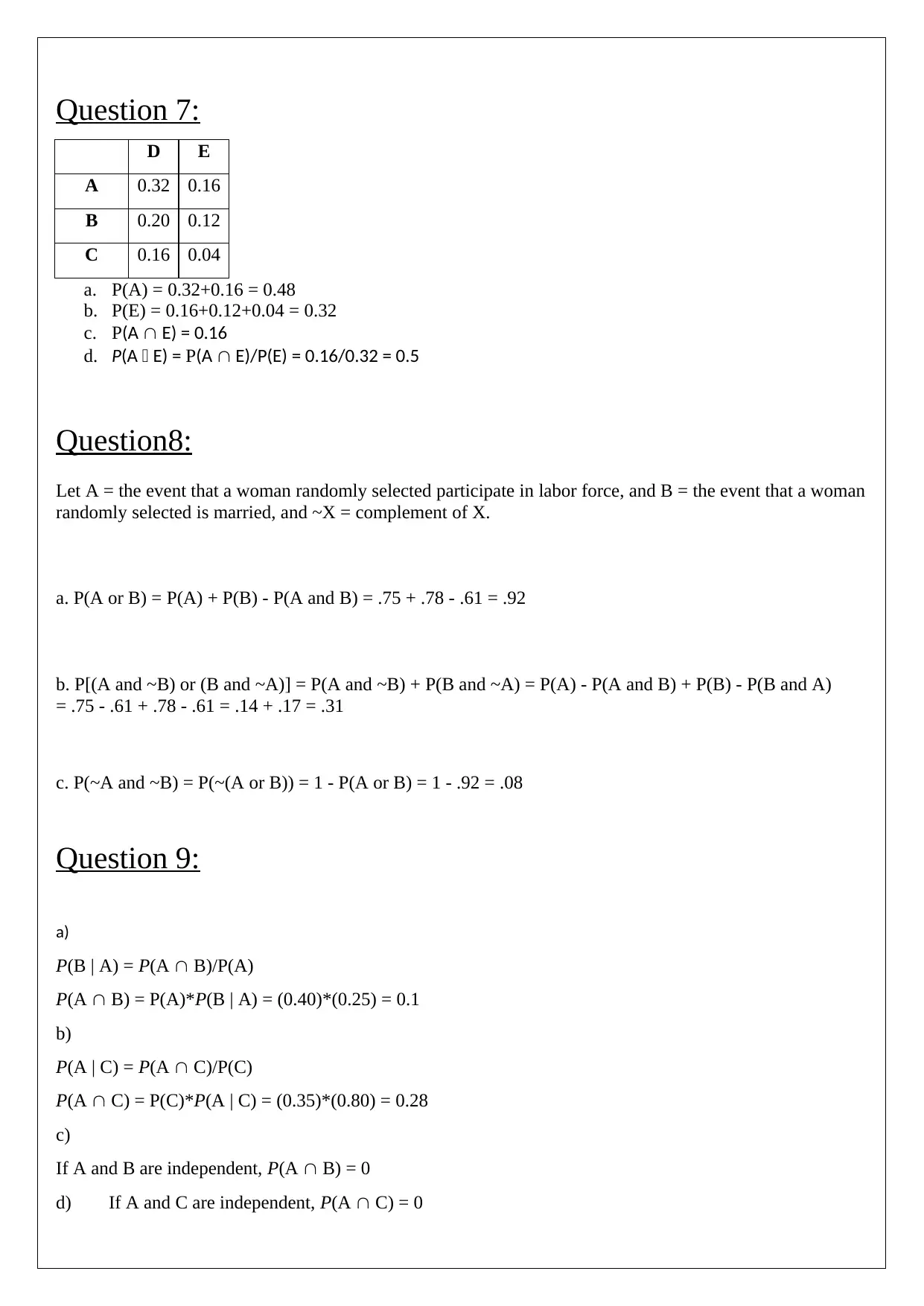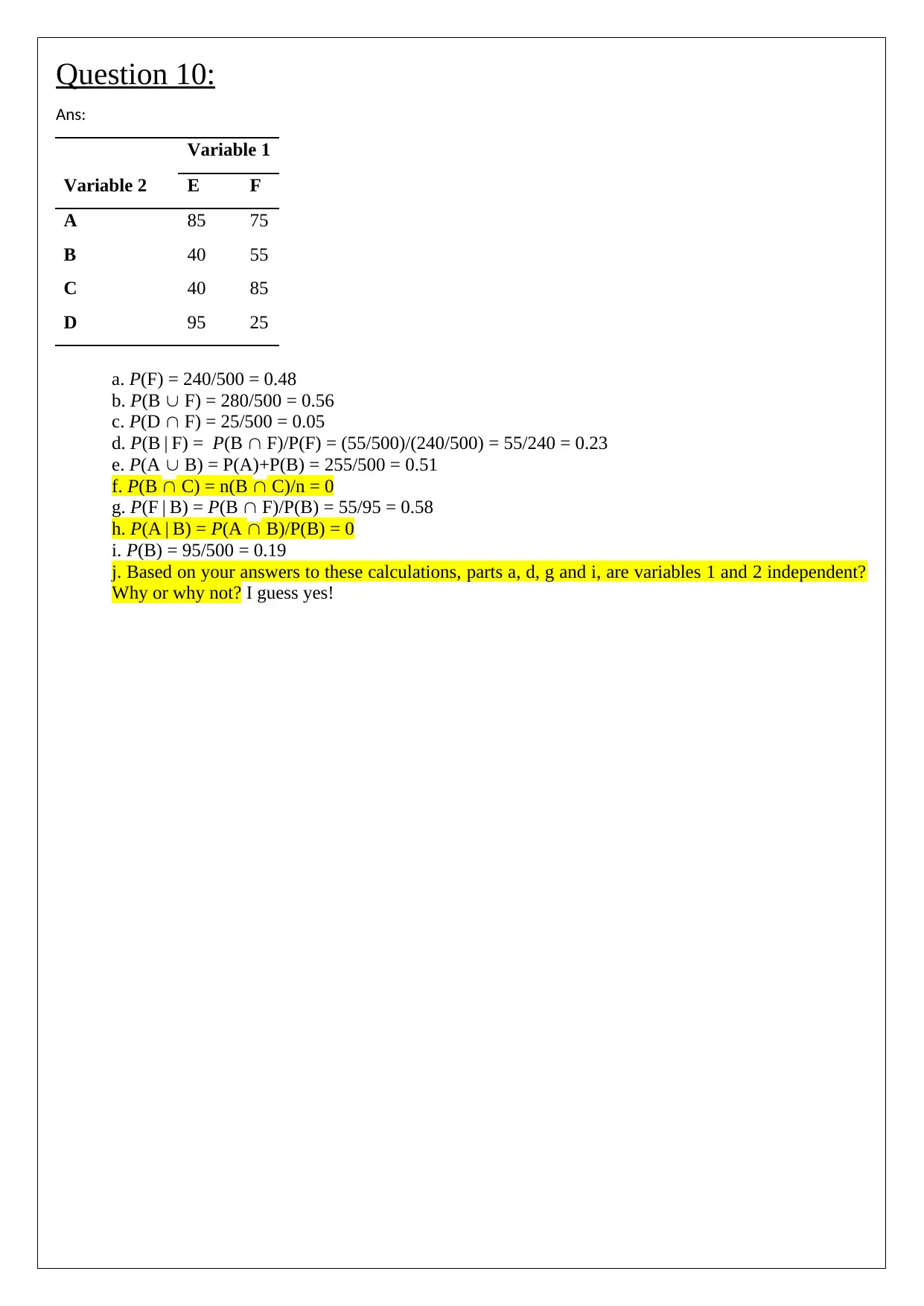Quantitative Methods (BUSN1009) Assessment 3a: Short Answer
VerifiedAdded on 2023/06/08
|4
|1051
|105
Homework Assignment
AI Summary
This document provides a detailed solution to a quantitative methods assignment, covering a range of statistical concepts. The assignment includes questions on sample size calculation, systematic sampling, percentiles, quartiles, variance, standard deviation, and the empirical rule. Probability questions involve calculating probabilities, conditional probabilities, and understanding independent events. The solution demonstrates step-by-step calculations and explanations for each question, offering a comprehensive guide to understanding and solving quantitative methods problems. This assignment is designed to help students grasp fundamental statistical concepts and apply them to real-world scenarios.
1 out of 4











![[object Object]](/_next/static/media/star-bottom.7253800d.svg)